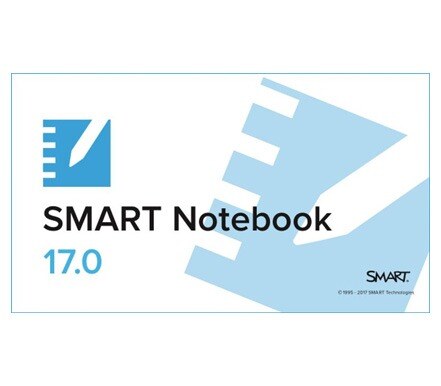The Leader’s Guide to Busting the 5 EdTech Myths
“The costliest EdTech mistake isn’t buying the wrong tool.
It’s believing the wrong thing about the right one.”
Most EdTech failures don’t happen because the technology was bad.
They happen because leaders make decisions based on beliefs that feel right…
But you are wrong.
In 18 years and 500+ school projects, I’ve seen the same patterns:
- Tools bought with enthusiasm.
- Teachers trained once.
- Usage slides within months.
|
“Teachers quietly lose confidence — and stop trying.”
|

|
The truth?
It’s rarely the tool or the teacher.
It’s the absence of a system around it.
This guide exposes 5 dangerous myths that quietly kill EdTech adoption and shows you how to replace them with measurable, leader-driven systems.
MYTH 1: “We’ve trained our teachers.
Why Leaders Believe It
Day 1 training is visible and energising.
Teachers attend, vendors present, photos are taken.
It feels like a key milestone has been achieved.
The Hidden Cost
Training without reinforcement is knowledge decay.
The Ebbinghaus Forgetting Curve shows that up to 80% of new learning is lost within 30 days..png?width=1024&height=570&name=image%20(7).png)
By the next term, your panel becomes a screen for YouTube videos or sits unused.
What This Looks Like in Schools
In a CBSE school in Chennai, 34 teachers trained on new panels.
By month two, usage dropped 68%.
Within 60 days, 23 of the 34 teachers had stopped using the panels entirely. Not because they didn’t care — but because they didn’t feel safe failing in front of students.
Leader’s System Fix
Design a Year-Long PD Arc, not a single event.
Integrate 10–15 min micro-practice into weekly staff meetings.
Appoint Feature Champions in each department.
Keep SOPs visible at the panel, not buried in a PDF.
Run the Weekly Adoption Loop:
Assign → Practice → Peer Share → Measure → Celebrate.
This 5-step loop builds muscle memory in under 6 weeks.
Pro Measurement Framework
|
Metric |
Definition |
Target |
Your School |
|
Adoption Rate by Feature |
% of teachers using the week’s focus feature |
≥80% |
|
|
Confidence Index |
Avg teacher self-rating after micro-training |
≥4/5 |
|
|
Time-to-First-Use |
Days from training to live classroom use |
≤7 days |
If Confidence Index drops below 3.5 for two weeks, schedule a targeted refresher.
Leader’s Next Move
Audit your PD calendar.
If there’s no structured reinforcement beyond Day 1, redesign it now before adoption erodes.
MYTH 2: “It’s syllabus-aligned, so it’ll be used.”
Why Leaders Believe It
If a tool directly supports syllabus content, it feels “automatically relevant” to teachers.
The Hidden Cost
Alignment on paper doesn’t equal integration in practice.
If using the tool slows lesson flow or adds prep work, teachers will default to old methods.
Every extra click is a reason for your teachers to abandon the tool and a reason for your investment to gather dust.
-1.png?width=1979&height=1180&name=image%20(1)-1.png)
What This Looks Like in Schools
A school in Bengaluru bought syllabus-mapped interactive content.
Teachers opened it in Week 1, but by mid-term, usage collapsed.
Why?
Navigating to each lesson took 4–5 extra clicks, eating into class time.
Leader’s System Fix
- Map tool features to lesson phases (opener, activity, recap).
- Build ready-to-use templates for common topics.
- Eliminate login and access delays — make it one click from desktop to lesson.
Pro Measurement Framework
|
Metric |
Definition |
Target |
Your School |
|
Template Usage Rate |
% of lessons using pre-built templates vs. starting from scratch |
≥70% |
|
|
Flow Impact Score |
Teacher rating on whether tool speeds/slows class flow |
≥4/5 |
|
|
Lesson Prep Time Saved |
Avg minutes saved in prep after integration |
≥10 mins |
Target Flow Impact Score: ≥4/5.
If below, meet with the department to redesign the integration points.
Leader’s Next Move
Shadow one week of lessons.
Identify where the tool breaks the flow, then remove those friction points immediately.
MYTH 3: “Students are loving it.”
Why Leaders Believe It
If students are engaged, the tool must be a success… right?
The Hidden Cost
|
Student excitement can mask teacher discomfort.
Without teacher confidence, usage collapses once novelty wears off. |
.png?width=1180&height=980&name=image%20(5).png)
|
What This Looks Like in Schools
In a Delhi school, quiz scores stayed flat despite high initial usage. Six months later, usage was down 80% — and teachers reported the tool ‘felt like a distraction, not an asset.
Leader’s System Fix
Track teacher comfort and confidence, not just student smiles.
Connect tool use to clear academic outcomes (quiz scores, concept mastery).
Have leaders model usage in assemblies or training sessions.
Pro Measurement Framework
|
Metric |
Definition |
Target |
Your School |
|
Teacher Comfort Score |
Monthly teacher self-rating on ease of use |
≥4/5 |
|
|
Outcome Alignment Index |
% of tool activities linked to syllabus objectives |
≥80% |
|
|
Leader Visibility Count |
# of times leadership demonstrates tool use per term |
≥3 |
If the teacher comfort score is <4 for two months, pause new feature rollouts and focus on skill-building.
Leader’s Next Move
Review the last 4 months of usage data.
If excitement is student-only, it’s time to address teacher readiness before the novelty dies.
MYTH 4: “We’ll track usage later.Why Leaders Believe It
Why Leaders Believe It
Tracking can feel like micromanagement.
Leaders assume “let’s give them time first” is respectful.
.png?width=1580&height=980&name=image%20(3).png)
The Hidden Cost
By the time you check, the silent quitting has already happened.
Teachers have moved on and pulling them back costs twice the effort.”
What This Looks Like in Schools
An International school at Bengaluru delayed tracking until mid-year.
When they checked, 40% of panels hadn’t been switched on in over a month.
Leader’s System Fix
Start tracking from Week 1 — normalise it as part of the rollout.
Track only 3–4 key metrics to avoid overwhelm.
Assign a Usage Champion in each department to own data collection.
Pro Measurement Framework
|
Metric |
Definition |
Target |
Your School |
|
Weekly Active Panel Rate |
% of panels used for ≥15 min/week |
≥90% |
|
|
Feature Adoption Rate |
% of core features used by each teacher |
≥80% |
|
|
Early Intervention Score |
% of non-users contacted within 7 days of being identified in usage reports |
100% |
Leader’s Next Move
Decide your Week 1 tracking plan now.
Waiting will cost more later — in retraining and lost momentum.
MYTH 5: “It has more features than the old one.
Why Leaders Believe It
More features feel like more value for money.
“In one of the Technology audits, we found 62% of purchased features were never used once in the first year.”
The Hidden Cost
More options = more cognitive load.
Teachers end up using none of them well — or at all.
What This Looks Like in Schools
A Kerala school upgraded to a “feature-rich” LMS. Teachers logged in, got overwhelmed, and reverted to WhatsApp for homework and notices.
Leader’s System Fix
.png?width=2005&height=579&name=image%20(6).png)
Run the ‘Three-Feature Sprint’
- Pick 3 features,
- Master them for 90 days,
- Lock them into the teaching routine before adding anything else.
Pro Measurement Framework
|
Metric |
Definition |
Target |
Your School |
|
Priority Feature Usage |
% of teachers using each of the 3 chosen features weekly |
≥80% |
|
|
Ease-of-Use Score |
Teacher survey score after 6 weeks |
≥4/5 |
|
|
Time-to-Mastery |
Avg time until teachers can use a feature without assistance |
≤3 weeks |
Leader’s Next Move
Stop showcasing “everything it can do.”
Decide which 3 features will win teacher trust — and focus only on those.
THE SYSTEM THAT REPLACES ALL 5 MYTHS
One Root Problem. One Proven Solution
Every failed EdTech rollout I’ve seen comes down to this
The absence of a system.
Schools that succeed have three non-negotiables:
- Continuous Support – Weekly, not yearly.
- Integrated Use – Fits daily flow, not extra work.
- Measured Outcomes – Track from Day 1.
“Every week without a system costs you teacher trust and tool ROI.
The System Starter Guide is the fastest way to fix this — in under 30 days.”
.png?width=1380&height=1180&name=image%20(4).png)
The exact steps are in my System Starter Guide — used by 100+ schools to move from “installed” to “adopted.”
📥 Download here: https://na2.hubs.ly/y0JYk60
.png?width=1322&height=350&name=C3ITXperts-logo-R%20(1).png)




.png)

